What I Buy and Why
Qatari Collector and Curator Mohammed Al Thani Scours the Globe for Works That Leave Him Breathless
He recently opened the Institute of Arab and Islamic Art in lower Manhattan.
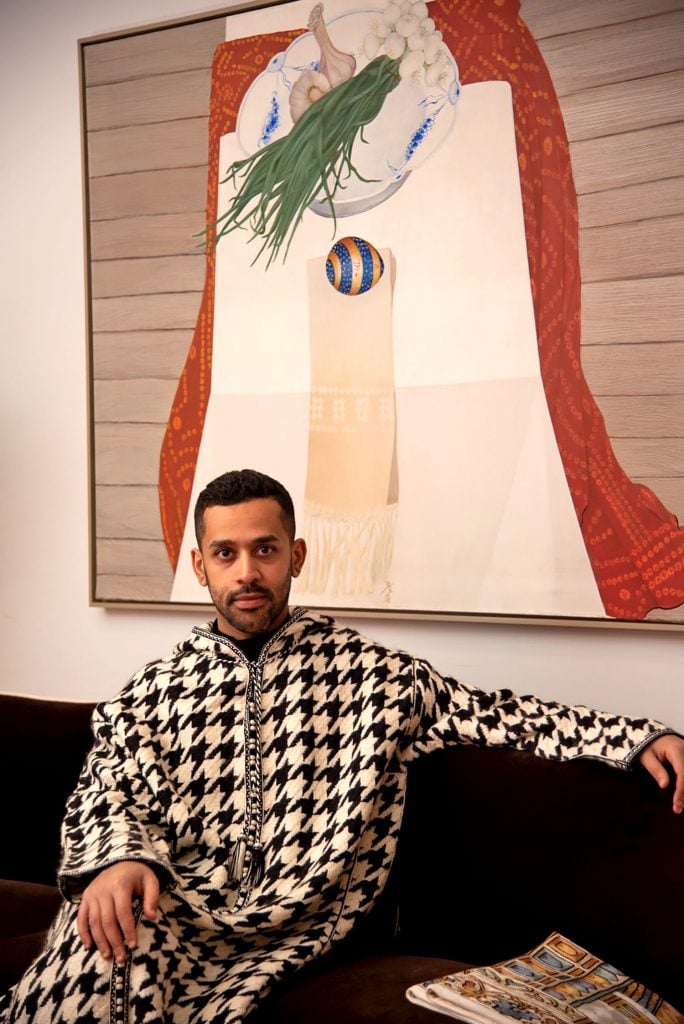
He recently opened the Institute of Arab and Islamic Art in lower Manhattan.

Lee Carter

After years in the offing and at least one former temporary home, the Institute of Arab and Islamic Art (IAIA) has opened its permanent doors at 22 Christopher Street in lower Manhattan. Now on its second exhibition—the first U.S. solo show of the late Iranian painter Behjat Sadr—the independent space is well on its way to fulfilling its objective of fostering dialogue between New York City and the Arab and Islamic worlds. The nonprofit carries out its mission through exhibitions, collaboration, and education.
The institute is the brainchild of Qatari-born Mohammed Al Thani. The founder and chief curator has dedicated his career to promoting cross-cultural understanding through art, his aim since graduating from the London Institute in Paris, where he wrote his dissertation on Fauvism and Cubism. He’s worked as a curator at Mathaf: Arab Museum of Modern Art and the Museum of Islamic Art, both in Doha, and has published several books on Arab and Islamic art.
All the while, Al Thani has also built a diverse personal art collection, boasting works by Etel Adnan (Lebanon), Muhannad Shono (Saudi Arabia), Naotaka Hiro (Japan), Raqib Shaw (India), Sérgio Sister (Brazil), Ibrahim El-Salahi (Sudan), and Marisol (U.S./Venezuela), as well as American artists Gisela Colon, Lari Pittman, and Mary Weatherford.
We spoke with Al Thani about how his collection, now housed in his Manhattan home, came to be.
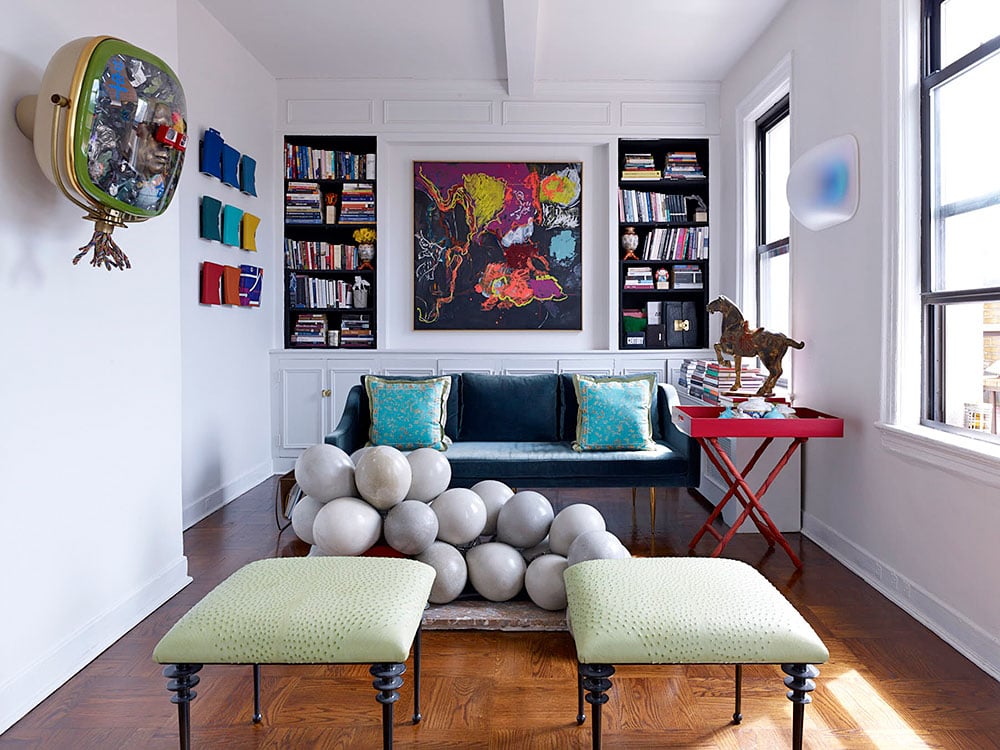
Left: Nam June Paik, Self Portrait (1989), consisting a 1950s Philco Predicta TV cabinet containing a bronze mask of the artist and other ephemera. Center, on floor: Kathleen Ryan, Bacchante (Reclining at the Hearth) (2016). Center, on wall: Per Kirkeby, Untitled (2012). Right: wall sculpture by Gisela Colon. Photo: Bjorn Wallander, courtesy of Mohammed Al Thani.
What was your first purchase?
One of my first purchases was a painting by Matt Saunders. I saw the work at FIAC in 2013, shortly after my friend Veronica Fernandez, who runs Fine Art Advising, arranged for a meeting with Leslie Nolen at Marian Goodman, where I had a deeply memorable conversation with Marian. I was sent to the gallery in Paris, where I walked into a room full of Saunders’s work that had just arrived from his studio, unframed, that I made my selection from.
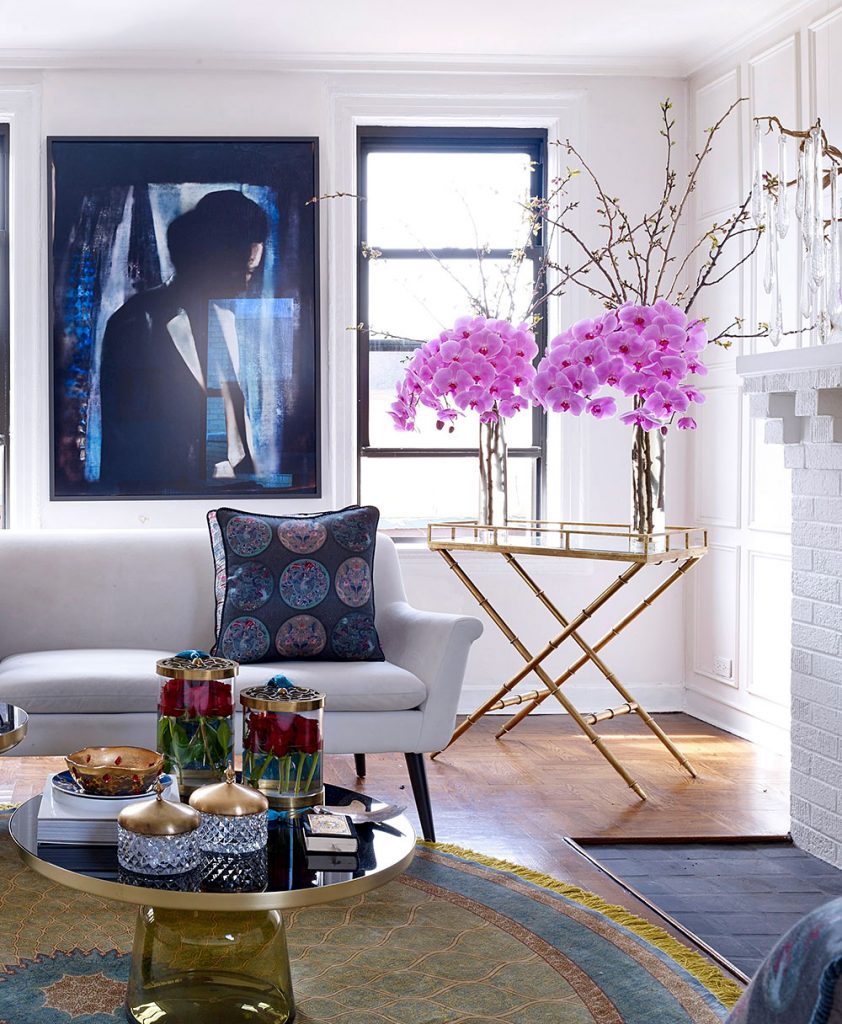
Top left: Matt Saunders, Borneo (Rose Hobart) #6 (2013). Photo: Bjorn Wallander. Courtesy of Mohammed Al Thani.
During that same trip, I was introduced to the works of Lari Pittman. I was awestruck. I knew I needed to be living with that work.
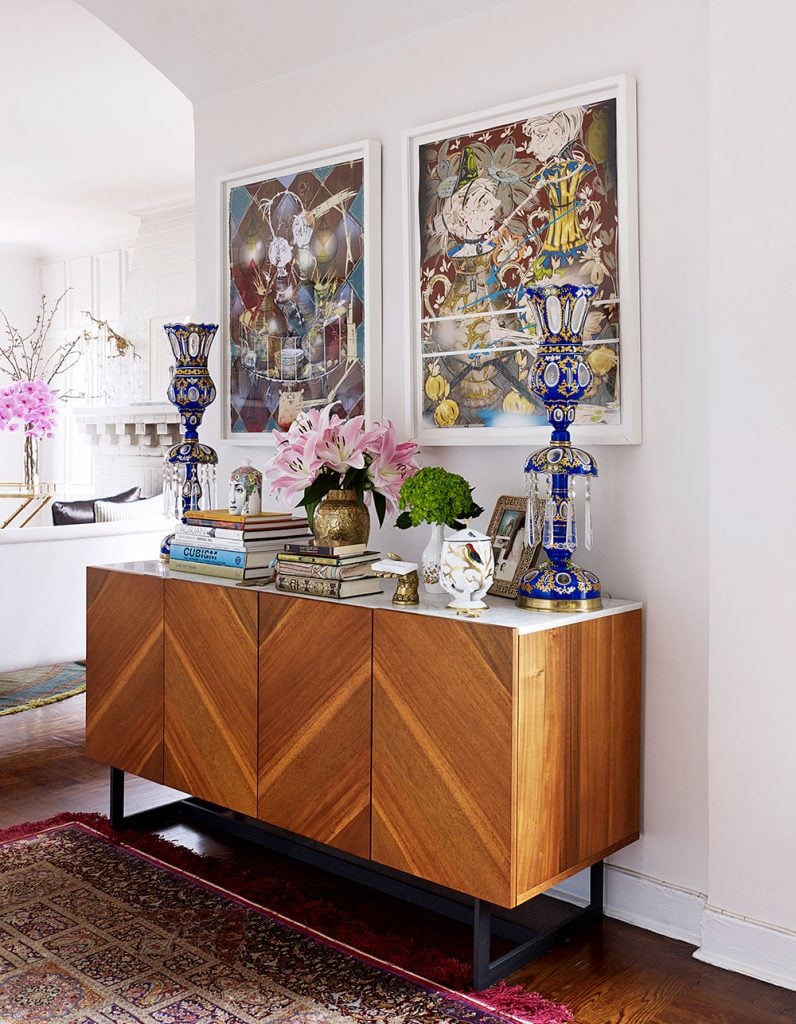
Two works by Lari Pittman on the wall: Untitled #2 (2009) and Untitled #7 (2010). Photo: Bjorn Wallander. Courtesy of Mohammed Al Thani.
What was your most recent purchase?
During the past few years, I have been spending my time focusing on relaunching the Institute of Arab & Islamic Art (IAIA). That said, the latest acquisitions were back in 2021. I went to visit David Totah at his gallery and saw Mara De Luca’s exhibition. There was a large red painting that took my breath away. I later learned that in her research to develop this painting, Mara was inspired by a Quranic verse: “When the sky will split apart, becoming rose-red like burnt oil!”
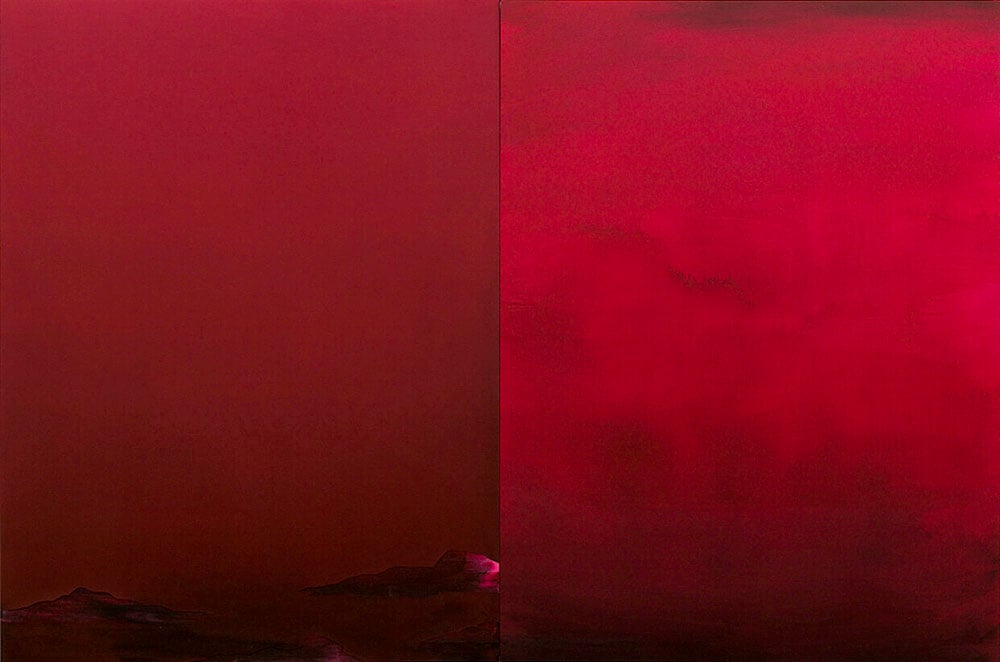
Mara De Luca, The Chariot (2020). Courtesy of TOTAH, NY.
Another recent work is a painting by Naotaka Hiro, who was represented by Kathryn Brennan. So much of Hiro’s body is involved in the creation of his paintings. I have been following his work since 2016, when he had his first solo show in New York at the same gallery, during which I acquired a few of his drawings.
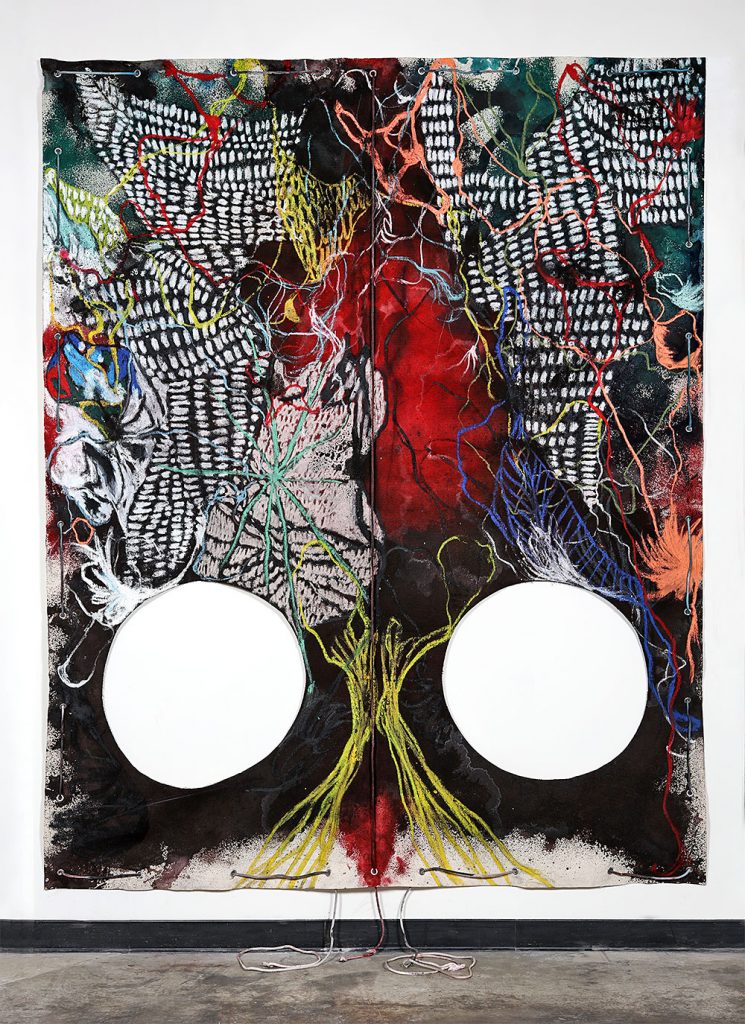
Naotaka Hiro, Untitled (Midst). Courtesy of Naotaka Hiro.
Tell us about a favorite work in your collection.
It’s tough to choose one; I acquire works only when I am compelled or moved. They all share a special moment in my life. But I would say one of the closest to my heart is a Per Kirkeby painting I acquired about 10 years ago; it came at a pivotal moment in my life when I was transitioning into a new professional career.
Another one is a Nam June Paik self-portrait sculpture set inside a 1950s Philco Predicta television. Amongst the objects set inside the TV cabinet: a globe, flowers and a watch, so much of which embodies my own experiences.
Another work I hold dear to my heart is a 1973 Etel Adnan drawing, I Will Realize an Endless Vision in The Orbit of Your Eyes. As a poet myself, I was keen to find a work of Adnan’s that included her poetry. With two suns and her moving words, that work never ceases to place me in a peaceful state of mind.
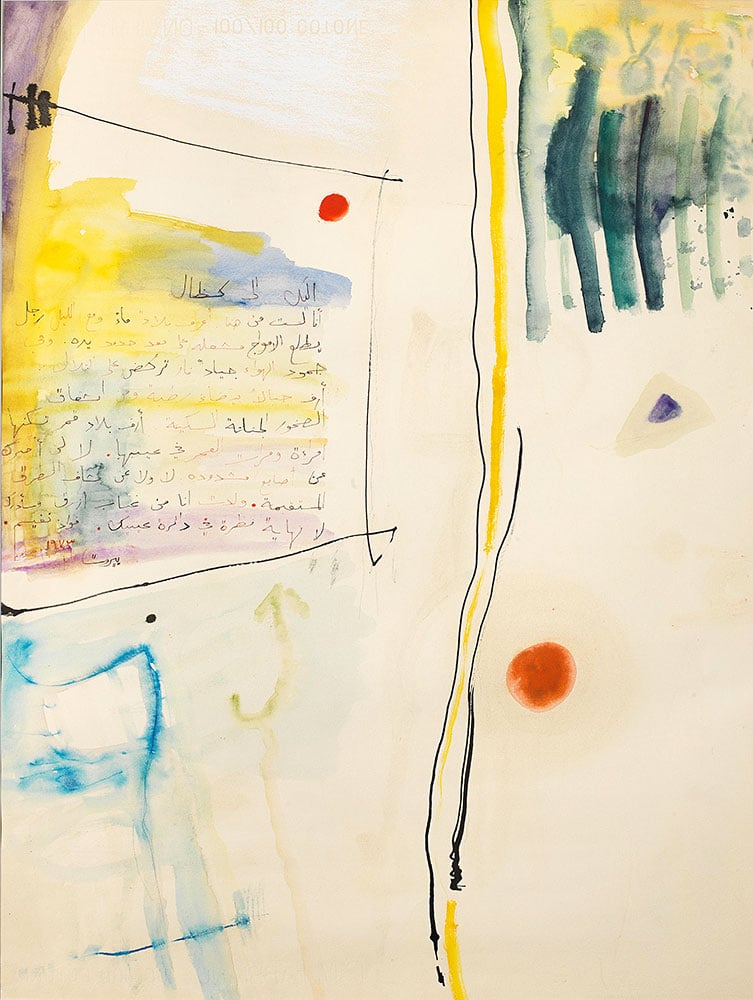
Etel Adnan, I Will Realize an Endless Vision in The Orbit of Your Eyes (1973). Courtesy of Mohammed Al Thani.
Which works or artists are you hoping to add to your collection this year?
During a trip to São Paulo, I visited Alexander Roesler at Nara Roesler, where I learned more about Sérgio Sister’s work. I was especially drawn to a series of drawings he completed while he was imprisoned for social and political activism. I am looking forward to living with his work.
During a recent visit to Tehran, I came across the works of Rene Saheb. With symbols of Persian mysticism, her paintings have a Surrealist quality to them, in which the artist uses subtle symbols to address the socio-political realities of the region. I learned that Saheb recently moved to New York and I am planning a studio visit in the next few weeks.
In Argentina last summer, Veronica Fernandez brought the work of Niño Grande to my attention. The iconography holds a deeper meaning, as he uses it to address disparities of class, as well the joy and utility these objects can bring to certain communities.
What is the most valuable work of art that you own?
So much of the art we live with brings value and joy to our surroundings.
Where do you buy art most frequently?
Since I don’t go to fairs as often as I used to, I have been acquiring works from galleries and studios during my travels.
Is there a work you regret purchasing?
When you collect out of love and passion, it is hard to regret.
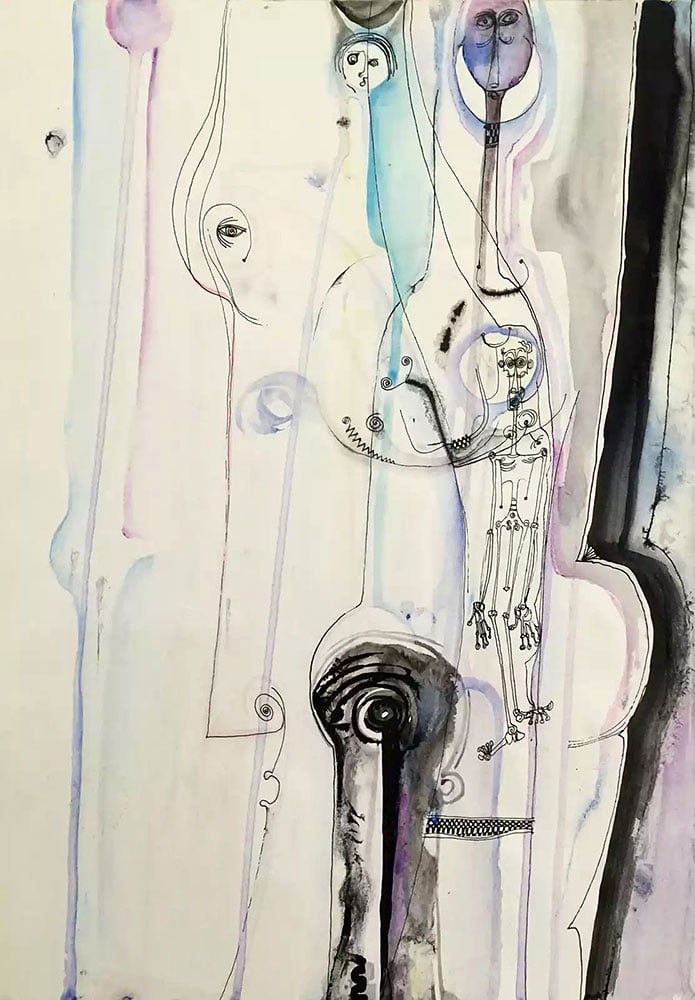
Ibrahim El-Salahi, Untitled (1958). Courtesy of Mohammed Al Thani.
What work do you have hanging above your sofa?
In my living room at home, I have a painting by Leyly Matine-Daftary, an Iranian Modernist. Her large-scale still life graces the presence of my space. Another work in my living room is a 1958 drawing by Ibrahim El-Salahi, one of the most influential living Arab artists.
What is the most impractical work of art you own?
A piece by Kathleen Ryan. It is impractical only in terms of its weight: an incredible sculpture made out of 1,000 pounds of concrete makes it difficult to move around, but it is proudly exhibited in my home. I cannot imagine my space without its presence.
What work do you wish you had bought when you had the chance?
About 10 years ago I came across a painting by Carmen Herrera shortly after a commitment I had already made on a work of another artist.
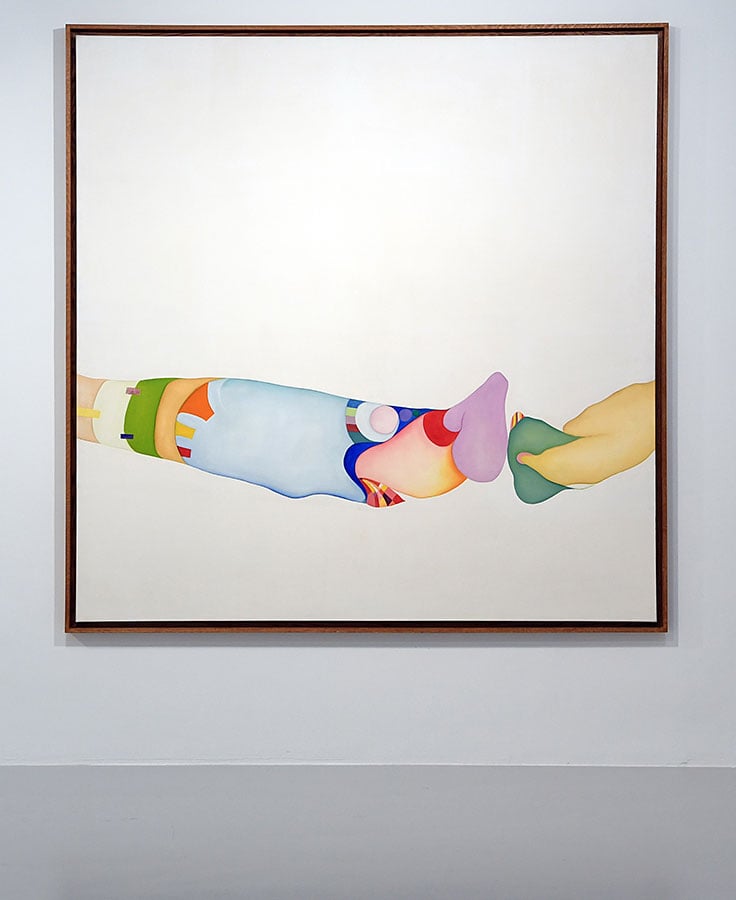
Huguette Caland, Espace Blanc I (1984). Courtesy of Mathaf: Arab Museum of Modern Art.
If you could steal one work of art without getting caught, what would it be?
Huguette Caland‘s Espace Blanc I from 1984, which I included in the retrospective I curated of Caland at the Mathaf: Arab Museum of Modern Art in Doha. The work came to my attention during a studio visit where I saw the work printed in the catalogue of an exhibition the artist had done during the 1980s in Paris, the only time it was ever exhibited. I hope a museum acquires it so people can experience the force that is Caland, which I believe is beautifully embodied in that painting.